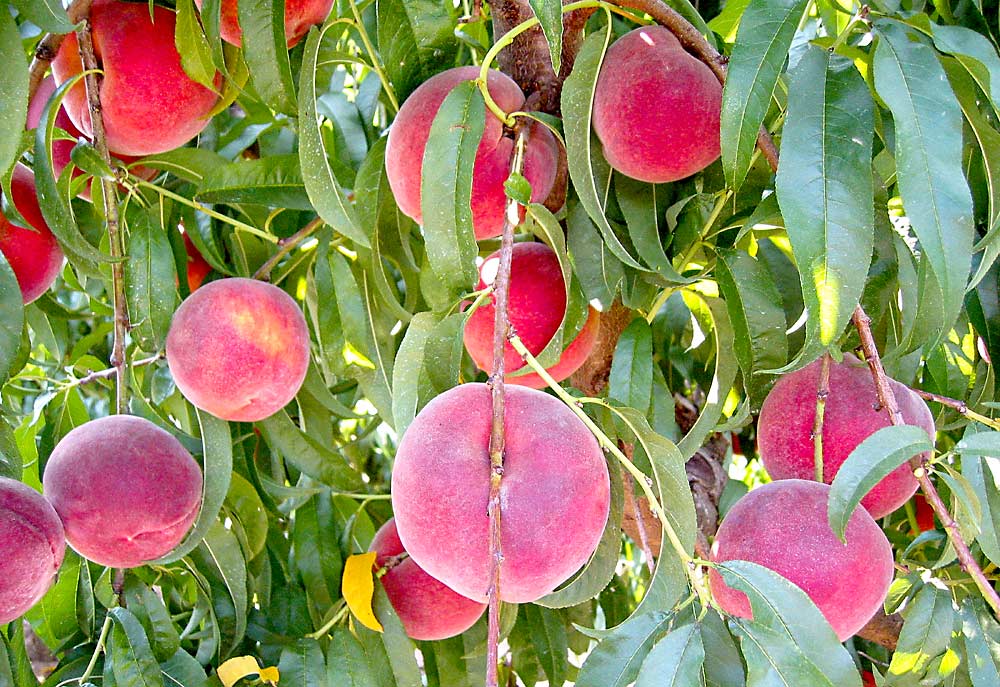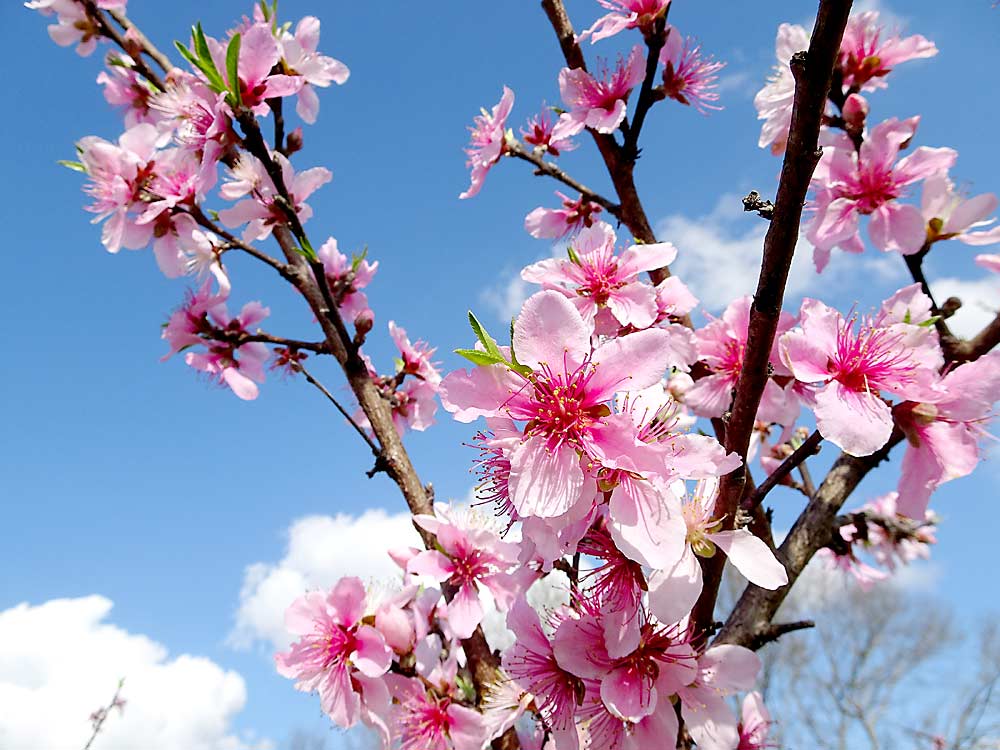
Southeastern peach growers have been dealing with an unwelcome trend in recent years: As winters grow warmer and growers respond by planting lower-chill cultivars, they end up with earlier blooms at greater risk for frost damage. Low-chill yet late-blooming cultivars would be ideal.
In May, the U.S. Department of Agriculture’s Agricultural Research Service released three fresh-market peaches that could bring growers closer to that ideal harvest window: Rich Joy, Liberty Joy and Crimson Joy.
According to Chunxian Chen, the USDA research horticulturist who developed the peaches, Crimson Joy and Liberty Joy require 700 and 650 chill hours, respectively — lower than most commercial peaches in the Southeast. Rich Joy requires about 850 chill hours — about the same number of chill hours as other area peaches.
Compared to their higher-chill counterparts, Crimson Joy and Liberty Joy can set a full crop in years with inadequate chill, Chen said. And in those low-chill years when they can set a full crop, both varieties appeared less prone to spring frost events. Because the evaluation data is limited, however, it’s too early to say for sure.
“In this context, the vulnerability may still depend on the extent of chill inadequacy or severity of spring freeze, and we will not say that these peaches are able to cope with all low chill and spring frosts,” he said.

Dario Chavez, an assistant professor and peach breeder with University of Georgia Extension, said he wasn’t familiar with the new peaches’ characteristics, but Southeastern growers are definitely interested in varieties that need fewer chill hours, because of the region’s warming winters. They will want to see how these varieties behave in Southeastern conditions and how they handle freeze events.
All three cultivars performed well at test locations in Southeastern states, including Georgia and South Carolina, Chen said. He expects they will be grown first in the Southeast, but could be tried in colder regions, too.
Crimson Joy, Liberty Joy and Rich Joy are not genetically related, but all have yellow flesh, soften slowly to a smooth, buttery texture, have balanced sugar-to-acid ratios and a pleasant eating quality, according to ARS. In central Georgia, Crimson Joy ripens in mid- to late June, Liberty Joy in late June to early July, and Rich Joy in late July to early August.
Variety requests should be addressed to: USDA-ARS, Office of Technology Transfer, 5601 Sunnyside Ave., Room 4-1192, Beltsville, MD 20705-5131. Prospective licensees also may email license@usda.gov. •
—by Matt Milkovich
Related:
—Southeastern peach growers eye solutions after freeze






Leave A Comment